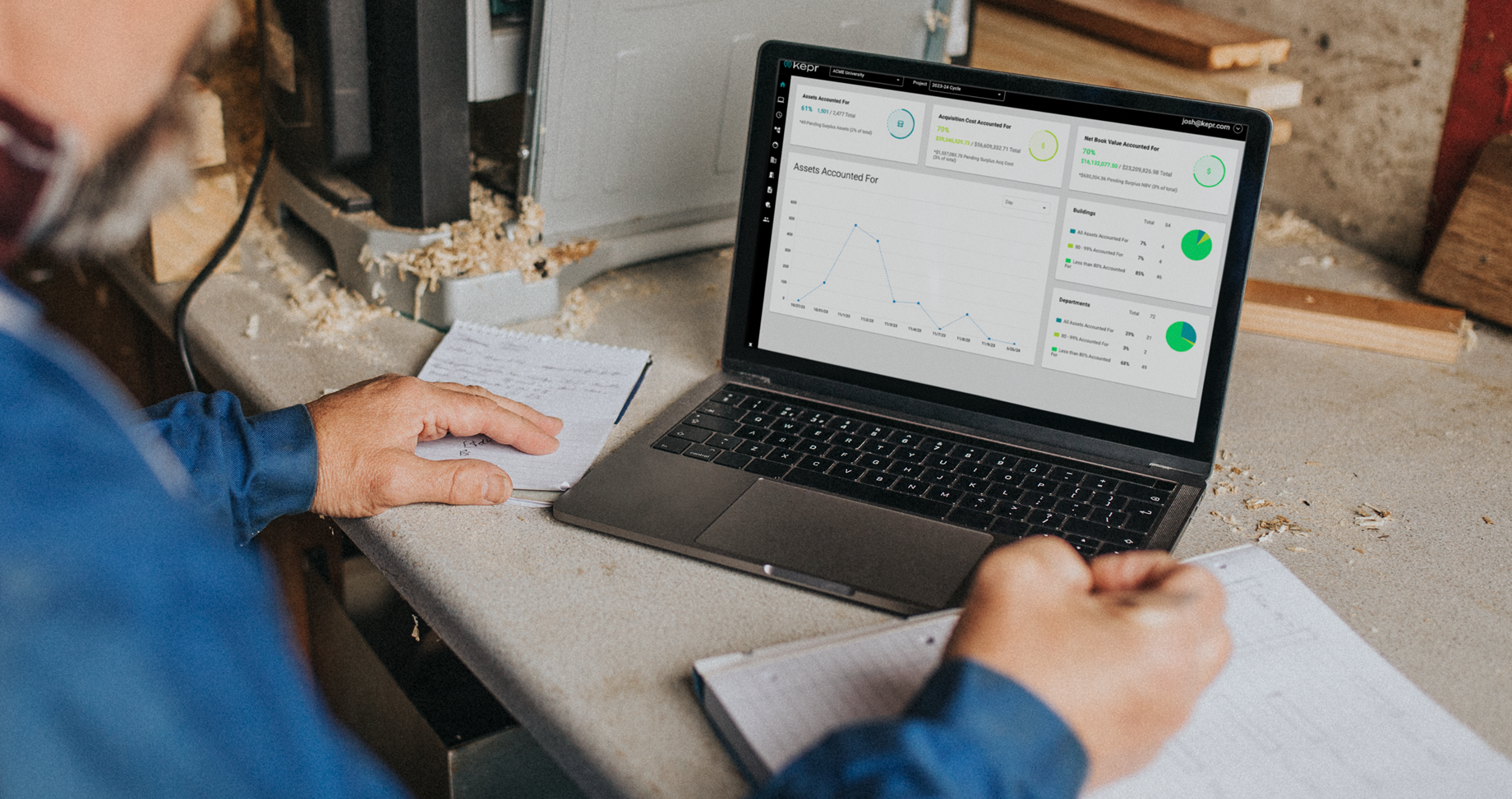
Asset tracking has come a long way from clipboards and one-time-a-year walkthroughs. As demands around inventory accuracy, audit readiness, and real-time reporting increase, so does the need for more modern, flexible tagging methods.
At KEPR, we work with higher education, healthcare, and public sector companies who manage thousands of capital assets across multiple buildings or campuses. No two inventories look the same. That’s why we support the most widely used and proven tagging methods in the field today: barcodes, QR codes, and RFID.
Let’s take a closer look at how they work, when they work best, and how KEPR brings them all together.
Barcodes and QR codes are still the most commonly used method for tagging physical assets. These are printed labels that store a unique identifier and can be scanned using a mobile device or handheld scanner.
In KEPR, barcodes and QR codes are fully supported through any mobile browser, without the need for a dedicated mobile app. Teams can log in, scan assets on the spot, take a picture and instantly update location, custodian or status. That makes this method ideal for day-to-day updates and departmental-level verification.
Why organizations choose barcodes and QR codes:
Where they fall short:

RFID (Radio Frequency Identification) takes asset tracking to the next level. Unlike barcodes, RFID tags don’t need to be visible to be read. They use radio waves to communicate with a scanner, allowing you to capture hundreds of items in seconds, even if they’re inside boxes, cabinets, or bins.
RFID is especially helpful in environments where time, precision, and compliance are top priorities. It’s also ideal for large-volume asset counts or situations where assets are shared between departments.
KEPR is fully compatible with RFID-based tracking. Tags can be scanned using our iOS mobile app or compatible mobile readers that sync directly with our platform. As assets are scanned, KEPR updates the record in real time and maintains an audit trail.
Why organizations choose RFID:
Where RFID may be a stretch:
KEPR was built to meet the needs of your institution’s asset tracking strategy, regardless of your tagging approach. Whether you’re applying barcodes, experimenting with RFID, or using a combination across departments, KEPR supports it all in a single, browser-first platform.
We don’t believe in pushing a one-size-fits-all method with our software. Some departments need fast scanning. Others need simple workflows for non-technical users. With KEPR, you can assign the right tagging method for the right asset and keep everything aligned in one system.
There’s no app to install and no jumping between systems. KEPR gives you a single source of truth that works for every team involved in asset tracking, including IT, Facilities, Finance and each participating department.
Ready to explore real-time asset tracking? Let’s talk about how KEPR makes it simple.
© 2025 KEPR. All Rights Reserved